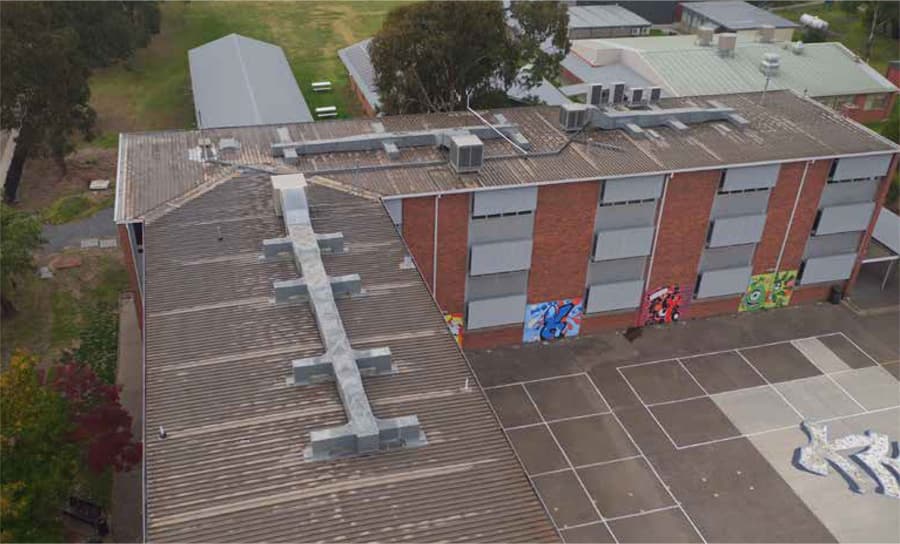NSW Department of Education
Identifying construction & maintenance faults while reducing risks associated with working at heights & in hazardous locations
National Drones conducted aerial inspections and condition reports at 150 schools across rural New South Wales for Schools Infrastructure NSW, a division of the NSW Department of Education.
The department aims to ensure every school-aged child has access to high quality education facilities at their local public school, and to deliver the best school infrastructure so that the NSW public education system is one of the finest in the world.
To this end $747 million is being invested over the next four years to tackle maintenance across 2,200 public schools.
Other case studies
The Challenges
The project presented a number of challenges for National Drones. Timing – Due to time constraints, Schools Infrastructure NSW required the entire project be completed within 60 days inclusive of:
- Project planning, preparation and logistics
- Preparation of documentation, Job Safety Analysis and flight authorisation for each location
- Onsite data / image capture
- Data / image processing
- Asset condition report preparation and delivery
School term – Inspections would need to be completed during the NSW school term. Careful planning and coordination with each school would be required to ensure that all flights could be conducted whilst ensuring the safety of all students.
Logistics – Many thousands of kilometres would need to be covered in order to complete the inspections and provide timely and accurate final reports. Operators would need to be quickly mobilised across NSW in order to meet the deadline.
Typical Workflow
- Aerial photogrammetry survey – High resolution aerial image capture of the school grounds and buildings. A UAV is quick and cost-effective method for capturing high quality survey / image data.
- Image / data processing – Captured images and related data is uploaded to a cloud server and post processed to create a high resolution georeferenced map of the school.
- Desktop image / data assessment – An analysis of the imagery is conducted to assess the overall condition of the roof and identify issues.
- Online roof inspection report generation and delivery – Roof inspection reports were prepared for each school and delivered online to Schools Infrastructure NSW.
The Solution
The National Drones team completed the project planning phase within five days drawing on procedures and workflows developed and refined from previous Queensland school’s projects.
Each school location was mapped. Drive times and distances were carefully calculated according to location and regions to create a series of inspection schedules that were allocated to operators.
Operators were deployed across NSW completing approximately 30 schools each over the next 20-30 days.
The collected data and images were uploaded, processed and ready for assessment by our inhouse qualified building inspectors within 48 hours. Roof inspection reports were generated and delivered online within 2-3 days of the onsite aerial data / image capture.

The Results
National Drones was able to successfully meet the timeline delivering 1200 building inspection reports for 150 schools within 40 days. In total, over 1000 defects, damage or maintenance issues were identified with some roofs requiring full redesign and replacement
The Figures
On average three schools were surveyed per day and five building inspection reports generated per day. The typical turnaround time from onsite data / aerial image capture to report generation was five days. All flight operations were conducted safely with no incidents or issues reported during the project.
Benefits to Department of Education New South Wales:
- Reduced OHS/WHS risk for manual roof inspection activities
- Reduced costs associated with hire and setup of external scaffolding, ladders, elevated work platforms (EWP’s) or harnesses
- Reduced interruptions to students and school activities
- Optimised allocation of field operation resources for proactive issue investigation and resolution, instead of time-consuming reactive work
- Early detection of maintenance issues leading to time and cost savings
- Potential for more efficient work / maintenance planning through change over time monitoring
- Improved asset register quality, both in terms of completeness verified assets, as well as accuracy, through high resolution imagery and geo-location precision
- Enhanced online data / image availability for stakeholders
Download this Case Study
You can download this case study by filling out the form below or go back and view more case studies.